
Santa Rosa National Park: A Natural Treasure of Costa Rica
Discover the rich biodiversity and historical significance of Santa Rosa National Park in Costa Rica, a haven for wildlife enthusiasts and history buffs alike.
Santa Rosa National Park, located in the Guanacaste Province of Costa Rica, is a captivating destination for nature lovers and history enthusiasts alike. This park is one of the oldest and most significant protected areas in Costa Rica, established in 1971 to preserve the region's unique ecosystems and historical landmarks. The park boasts a diverse range of habitats, from dry tropical forests to coastal mangroves and pristine beaches. Wildlife enthusiasts will be thrilled to encounter a variety of species, including monkeys, deer, and an array of birdlife. The park is also a critical nesting site for sea turtles, offering visitors a chance to witness these magnificent creatures in their natural habitat. Santa Rosa National Park is not only rich in natural beauty but also steeped in history. The park is home to La Casona, a historic hacienda that played a pivotal role in Costa Rican independence. This site commemorates the Battle of Santa Rosa, where Costa Rican forces defeated invading filibusters in 1856. Visitors can explore the hacienda and its museum to gain a deeper understanding of the country's heritage. Whether you're hiking through lush forests, relaxing on secluded beaches, or delving into the past at La Casona, Santa Rosa National Park offers a multifaceted experience that showcases the best of Costa Rica's natural and cultural treasures.
Local tips in Santa Rosa National Park
- Visit during the dry season (December to April) for the best weather conditions.
- Wear sturdy hiking boots as some trails can be rugged and uneven.
- Bring plenty of water and snacks, as facilities within the park are limited.
- Don't miss the chance to visit La Casona and learn about Costa Rica's history.
- If you visit during turtle nesting season, be sure to join a guided tour for a respectful and informative experience.
Santa Rosa National Park: A Natural Treasure of Costa Rica
Santa Rosa National Park, located in the Guanacaste Province of Costa Rica, is a captivating destination for nature lovers and history enthusiasts alike. This park is one of the oldest and most significant protected areas in Costa Rica, established in 1971 to preserve the region's unique ecosystems and historical landmarks. The park boasts a diverse range of habitats, from dry tropical forests to coastal mangroves and pristine beaches. Wildlife enthusiasts will be thrilled to encounter a variety of species, including monkeys, deer, and an array of birdlife. The park is also a critical nesting site for sea turtles, offering visitors a chance to witness these magnificent creatures in their natural habitat. Santa Rosa National Park is not only rich in natural beauty but also steeped in history. The park is home to La Casona, a historic hacienda that played a pivotal role in Costa Rican independence. This site commemorates the Battle of Santa Rosa, where Costa Rican forces defeated invading filibusters in 1856. Visitors can explore the hacienda and its museum to gain a deeper understanding of the country's heritage. Whether you're hiking through lush forests, relaxing on secluded beaches, or delving into the past at La Casona, Santa Rosa National Park offers a multifaceted experience that showcases the best of Costa Rica's natural and cultural treasures.
When is the best time to go to Santa Rosa National Park?
Iconic landmarks you can’t miss
Hacienda Santa Rosa
Explore the historical beauty of Hacienda Santa Rosa in Costa Rica's Guanacaste Province, where nature and culture intertwine in a captivating experience.

Parque Nacional Santa Rosa
Explore the natural wonders and rich history of Parque Nacional Santa Rosa, a breathtaking national park in Guanacaste Province, Costa Rica.

Entrada a Santa Rosa
Experience the stunning biodiversity and rich historical legacy of Entrada a Santa Rosa, a national park in Guanacaste Province, Costa Rica.

Unmissable attractions to see
Serendipity Charters
Explore the breathtaking coastlines of Costa Rica with Serendipity Charters, offering unforgettable sailing experiences and stunning marine adventures.

Museo Histórico Casona de Santa Rosa
Explore Costa Rica's historical heritage at Museo Histórico Casona de Santa Rosa, a captivating war museum nestled in stunning natural surroundings.

Vida Aventura Nature Park
Embrace the tranquility and biodiversity of Vida Aventura Nature Park in Guanacaste, Costa Rica for an unforgettable nature escape.

Entrada a Santa Rosa
Explore the stunning landscapes and rich biodiversity of Entrada a Santa Rosa, a national park in Guanacaste, Costa Rica, perfect for nature lovers and adventurers.
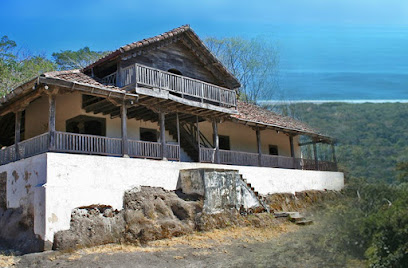
Sector Murcielago
Explore the breathtaking landscapes and rich biodiversity of Sector Murcielago, a stunning national park in Guanacaste, Costa Rica.

Rancho Costofalo
Explore the natural beauty and cultural richness of Rancho Costofalo, a serene escape in Guanacaste Province, Costa Rica.

Essential places to dine
Markets, malls and hidden boutiques
Santa Rosa Plaza
Explore diverse shopping, dining, and entertainment at Santa Rosa Plaza in Liberia, a unique shopping experience in Guanacaste, Costa Rica.

Parque Nacional Santa Rosa
Explore the stunning biodiversity and rich history of Parque Nacional Santa Rosa, a national park in Guanacaste, Costa Rica, perfect for nature lovers and adventurers.

Rumbo Pura Vida (Rumbo Shop Aeropuerto Internacional Liberia, Guanacaste)
Explore Rumbo Pura Vida at Liberia International Airport for authentic Costa Rican souvenirs, chocolates, coffee, and more, capturing the essence of your travels.

Britt Shop Dreams Las Mareas
Explore the vibrant Britt Shop Dreams Las Mareas for unique souvenirs, local crafts, and Costa Rican delights in Guanacaste Province.

Britt Shop Grand Papagayo
Discover unique souvenirs and local treasures at Britt Shop Grand Papagayo in Playa Buena, a must-visit for every tourist in Costa Rica.

La Gran Nicoya
Explore La Gran Nicoya: Your ultimate destination for local crafts, souvenirs, and authentic Costa Rican coffee in Guardia.

Britt Gift Shop
Experience the best of Costa Rican crafts and café culture at Britt Gift Shop in Culebra, Guanacaste – a perfect blend of shopping and relaxation.

Britt Shop - Villa Sol
Discover unique Costa Rican souvenirs at Britt Shop in Playa Hermosa, from artisanal chocolates to local crafts, perfect for all travelers.

Britt Shop
Discover the essence of Costa Rica at Britt Shop, where unique souvenirs and local treasures await every traveler.

Britt Shop Planet Hollywood
Explore the vibrant Britt Shop at Planet Hollywood for unique souvenirs, local delicacies, and authentic Costa Rican treasures.

Utópica Store & Creations
Explore the creative spirit of Costa Rica at Utópica Store & Creations, where unique handcrafted treasures await every visitor.

Britt Shop Diamante Eco Adventure Park
Explore the Britt Shop Diamante Eco Adventure Park: a vibrant souvenir store offering local crafts, chocolates, and more amidst Costa Rica's natural beauty.

Britt Shop Secrets Papagayo
Discover unique souvenirs, local crafts, and delicious treats at Britt Shop Secrets Papagayo, the perfect place to find mementos from your Costa Rican adventure.

Almacén El Pirineo
Discover the flavors of Guanacaste at Almacén El Pirineo, your local supermarket for fresh produce and unique Costa Rican products.

Tico Souvenirs
Discover authentic Costa Rican crafts and souvenirs at Tico Souvenirs in Cuajiniquil, a charming store reflecting the vibrant local culture.
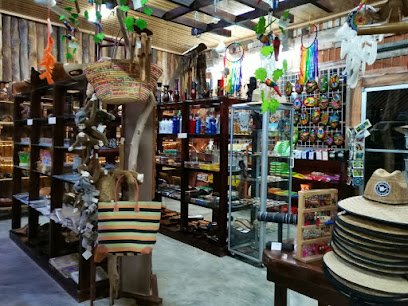
Essential bars & hidden hideouts
Bar El Ancla
Discover the lively spirit of Costa Rica at Bar El Ancla, where refreshing drinks and vibrant atmosphere await every visitor.

Mariajuana Restobar
Experience authentic Costa Rican cuisine at Mariajuana Restobar in Liberia, where grilled delights and local flavors meet in a vibrant atmosphere.

The Shack
Experience the vibrant atmosphere of The Shack in Potrero, Guanacaste, where delicious food, live music, and beach vibes come together.

HACIENDA BLU BEACH
Experience the best of Costa Rican dining at Hacienda Blu Beach, where delicious cuisine meets vibrant live music in a stunning oceanfront setting.
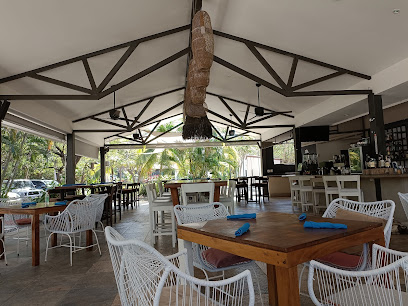
Pacífico Beach Club
Experience the lively atmosphere and stunning ocean views at Pacífico Beach Club, a premier bar and restaurant in Guanacaste, Costa Rica.

Numu Taproom and Bistro by Chef Nicolas Devenelle
Discover the flavors of Guanacaste at Numu Taproom and Bistro, where innovative cuisine meets a vibrant atmosphere in Costa Rica.

El coyote y el zanate
Experience the vibrant nightlife of Liberia at El Coyote y El Zanate, a lively bar offering delicious drinks and authentic local cuisine.

Crazy Monkey Bar
Discover the lively Crazy Monkey Bar in Tamarindo, where delicious food meets innovative cocktails in a vibrant nightlife setting.

El Indio Bar & Grill
Experience the vibrant flavors of Costa Rica at El Indio Bar & Grill, a top dining spot in Guanacaste that delights with local and international cuisine.

The Garden Bar
Discover the vibrant flavors and friendly atmosphere of The Garden Bar in Playa del Coco, the perfect spot for grilled delights and refreshing drinks.

Maderos Brewery
Discover Maderos Brewery in Liberia, Guanacaste – a craft beer haven featuring local flavors and a vibrant atmosphere for all beer lovers.

Balbo's
Experience the best of Guanacaste at Balbo's, where local flavors meet stunning nature and endless adventures.
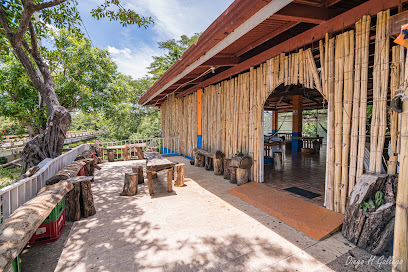
The Whiskey Howler beach bar and grill
Experience the best of beachside dining at The Whiskey Howler, where American cuisine meets fresh sushi in a stunning coastal setting.

CATA Agave Bar
Discover the vibrant atmosphere of CATA Agave Bar in Tamarindo, where unique mezcal and tequila cocktails await your taste buds.

Monkey's Bar/Restaurant
Discover the vibrant atmosphere and delicious grilled cuisine at Monkey's Bar/Restaurant in the heart of Guanacaste Province.
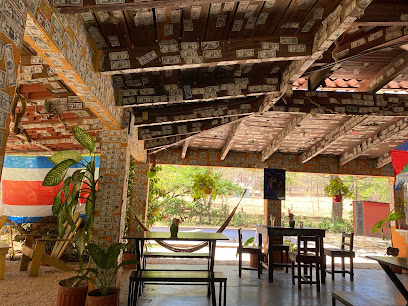
Local Phrases about Santa Rosa National Park
-
- HelloHola
[oh-lah] - GoodbyeAdiós
[ah-dyohs] - YesSí
[see] - NoNo
[noh] - Please/You're welcomePor favor/De nada
[por fah-vor/deh nah-dah] - Thank youGracias
[grah-syahs] - Excuse me/SorryDisculpe/Lo siento
[dees-kool-pe/loh syen-toh] - How are you?¿Cómo estás?
[koh-moh ehs-tahs] - Fine. And you?Bien. ¿Y tú?
[byen. ee too] - Do you speak English?¿Hablas inglés?
[ah-blahs een-glays] - I don't understandNo entiendo
[noh ehn-tyen-doh]
- HelloHola
-
- I'd like to see the menu, pleaseMe gustaría ver el menú, por favor
[meh goos-tah-ree-ah behr ehl meh-noo, por fah-vor] - I don't eat meatNo como carne
[noh koh-moh kahr-neh] - Cheers!¡Salud!
[sah-lood] - I would like to pay, pleaseMe gustaría pagar, por favor
[meh goos-tah-ree-ah pah-gahr, por fah-vor]
- I'd like to see the menu, pleaseMe gustaría ver el menú, por favor
-
- Help!¡Ayuda!
[ah-yoo-dah] - Go away!¡Vete!
[veh-teh] - Call the Police!¡Llame a la policía!
[yah-meh ah lah poh-lee-see-ah] - Call a doctor!¡Llame a un médico!
[yah-meh ah oon meh-dee-koh] - I'm lostEstoy perdido/a
[ehs-toy pehr-dee-doh/dah] - I'm illEstoy enfermo/a
[ehs-toy ehn-fehr-moh/ah]
- Help!¡Ayuda!
-
- I'd like to buy...Me gustaría comprar...
[meh goos-tah-ree-ah kohm-prahr] - I'm just lookingSólo estoy mirando
[soh-loh ehs-toy meer-ahn-doh] - How much is it?¿Cuánto cuesta?
[kwan-toh kwehs-tah] - That's too expensiveEso es demasiado caro
[eh-soh ehs deh-mah-syah-doh kah-roh] - Can you lower the price?¿Puede bajar el precio?
[pweh-deh bah-hahr ehl pree-syoh]
- I'd like to buy...Me gustaría comprar...
-
- What time is it?¿Qué hora es?
[keh oh-rah ehs] - It's one o'clockEs la una
[ehs lah ooh-nah] - Half past (10)Media (10)
[meh-dyah (deez ee-syehs)] - MorningMañana
[mah-nyah-nah] - AfternoonTarde
[tahr-deh] - EveningNoche
[noh-cheh] - YesterdayAyer
[ah-yehr] - TodayHoy
[oy] - TomorrowMañana
[mah-nyah-nah] - 1Uno
[oo-noh] - 2Dos
[dohs] - 3Tres
[trehs] - 4Cuatro
[kwah-troh] - 5Cinco
[seen-koh] - 6Seis
[says] - 7Siete
[syeh-teh] - 8Ocho
[oh-choh] - 9Nueve
[nweh-veh] - 10Diez
[dyehs]
- What time is it?¿Qué hora es?
-
- Where's a/the...?¿Dónde está...?
[dohn-deh ehs-tah] - What's the address?¿Cuál es la dirección?
[kwal ehs lah dee-rehk-syohn] - Can you show me (on the map)?¿Puede mostrarme (en el mapa)?
[pweh-deh mohs-trar-meh (ehn ehl mah-pah)] - When's the next (bus)?¿Cuándo es el próximo (autobús)?
[kwan-doh ehs ehl proh-see-moh (ow-toh-boos)] - A ticket (to ....)Un boleto (a ....)
[oon boh-leh-toh (ah)]
- Where's a/the...?¿Dónde está...?
History of Santa Rosa National Park
-
One of the most significant events in Costa Rican history, the Battle of Santa Rosa was fought on March 20, 1856. This battle saw Costa Rican forces successfully repel an invading army of American filibusters led by William Walker. The victory at the Hacienda Santa Rosa was instrumental in defending Costa Rican sovereignty and is celebrated annually as a symbol of national pride.
-
The historic Hacienda Santa Rosa, also known as 'La Casona,' is a key landmark within the park. This colonial-era ranch house was the site of the Battle of Santa Rosa and has been preserved as a museum. Visitors can explore the exhibits that detail the battle, the daily life of the hacienda during the 19th century, and the broader historical context of the region.
-
Before Spanish colonization, the area that now comprises Santa Rosa National Park was inhabited by indigenous peoples, including the Chorotega and Nicoya cultures. Archaeological sites within the park reveal evidence of these early inhabitants, including petroglyphs, pottery, and tools, offering a glimpse into the rich pre-Columbian history of the region.
-
Santa Rosa National Park was officially established in 1971, making it one of Costa Rica's first national parks. The park was created to protect the region's diverse ecosystems, including dry tropical forests, savannas, and mangrove swamps, as well as its historical sites. The establishment of the park marked a significant step in Costa Rica's commitment to conservation and environmental protection.
-
Since its establishment, Santa Rosa National Park has become a model for conservation in Central America. The park is home to a diverse array of wildlife, including jaguars, howler monkeys, and sea turtles that nest on its beaches. Ongoing conservation efforts aim to preserve these habitats and the species that depend on them, making the park a critical refuge for biodiversity.
-
Santa Rosa National Park is not only a natural treasure but also a cultural one. The park hosts various educational programs and cultural events that celebrate Costa Rican heritage and the historical significance of the area. These activities help to foster a sense of national identity and pride, while also promoting sustainable tourism and environmental stewardship.
Santa Rosa National Park Essentials
-
Santa Rosa National Park is located in the Guanacaste Province of Costa Rica. The nearest international airport is Daniel Oduber Quirós International Airport (LIR) in Liberia, which is approximately 35 kilometers away from the park. From Liberia, you can rent a car or take a taxi to the park, which will take around 1 hour. Alternatively, you can take a bus from Liberia to La Cruz and then a taxi to the park entrance.
-
Within Santa Rosa National Park, the best way to explore is on foot or by renting a 4x4 vehicle, as the terrain can be rugged. Public buses do not operate within the park, but guided tours are available and often include transportation. Bicycles are also an option for the more adventurous, though be prepared for challenging trails.
-
The official currency in Costa Rica is the Costa Rican Colón (CRC). It is advisable to carry cash, especially in remote areas like Santa Rosa National Park, as credit card facilities may not be available. ATMs are available in nearby towns such as Liberia and La Cruz, but it's best to withdraw sufficient cash before heading to the park.
-
Santa Rosa National Park is generally safe, but it is important to take standard precautions. Keep an eye on your belongings, especially in crowded areas like bus stations. Avoid walking alone at night and stay on designated trails to avoid getting lost. There are no specific high-crime areas targeting tourists within the park, but always stay vigilant.
-
In case of emergency, dial 911 for immediate assistance. The nearest medical facilities are in Liberia, so it is advisable to have travel insurance that covers medical emergencies. Park rangers are available for assistance and can be found at the park's main entrance and various ranger stations within the park. For minor health issues, carry a basic first-aid kit and necessary medications.
-
Fashion: Do wear lightweight, breathable clothing and sturdy hiking shoes. Don't wear flip-flops or sandals on trails. Religion: Do respect local customs and traditions, although the park is not a religious site. Public Transport: Do plan your transport ahead as public buses do not operate within the park. Greetings: Do greet people with a friendly 'Hola'. A handshake is also common. Eating & Drinking: Do bring sufficient water and snacks, as food options within the park are limited. Don't litter; always carry your trash out of the park.
-
To experience Santa Rosa National Park like a local, visit during the dry season (December to April) for easier hiking conditions. Early morning or late afternoon are the best times to spot wildlife. Don't miss the historic La Casona, which offers insight into Costa Rican history. Engage with park rangers, who can provide valuable information about the park's flora and fauna. If you have time, venture to nearby beaches like Playa Naranjo for a complete experience.
Nearby Cities to Santa Rosa National Park
-
Things To Do in Playa Flamingo
-
Things To Do in San Juan del Sur
-
Things To Do in Guanacaste
-
Things To Do in Tamarindo
-
Things To Do in Rivas
-
Things To Do in Ometepe
-
Things To Do in Monteverde
-
Things To Do in La Fortuna
-
Things To Do in Granada
-
Things To Do in Masaya
-
Things To Do in Managua
-
Things To Do in Jaco
-
Things To Do in San Jose
-
Things To Do in Manuel Antonio
-
Things To Do in Jinotega







